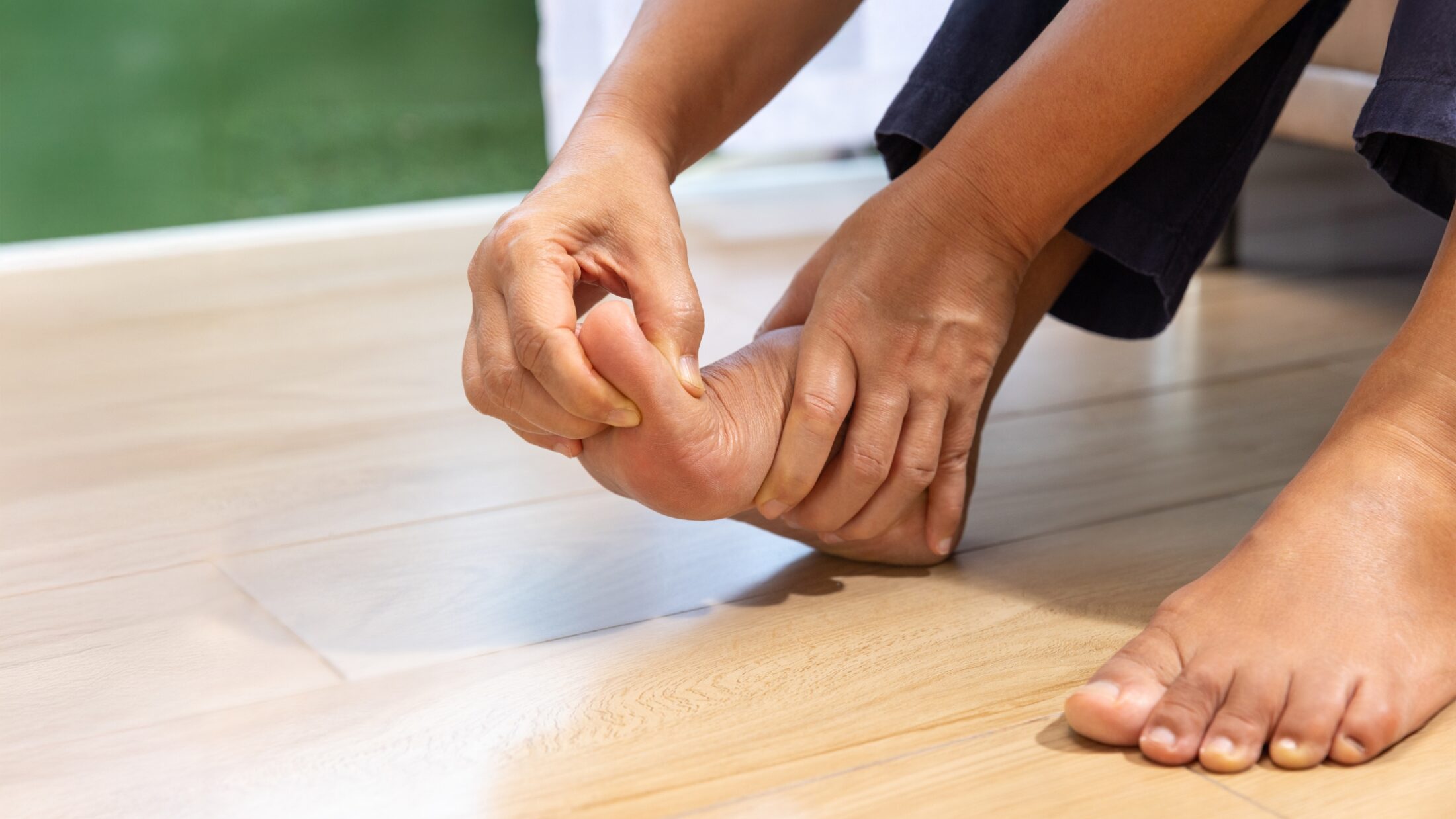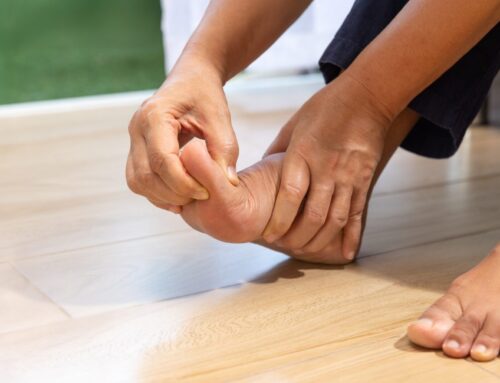Keeping your feet healthy is one of the most important yet often overlooked parts of managing diabetes. Even small issues like friction, pressure, or even minor issues like rubbing, tight shoes, or uneven weight distribution can quickly turn into painful or lasting complications.
Footwear for diabetes is designed to reduce those risks by focusing on comfort, protection, and balance. When paired with supportive orthotics, it helps distribute pressure evenly, minimize friction, and keep each step stable. A properly fitted shoe with custom inserts supports circulation and relieves strain.
Why Choosing the Right Footwear for Diabetes Makes a Difference
Diabetes affects more than blood sugar, it influences circulation, nerve sensitivity, and how your body heals. Over time, reduced blood flow and nerve function in the feet can make it difficult to notice small cuts, friction points, or pressure spots. What might be a minor irritation for most people can quickly turn into a blister, sore, or ulcer for someone living with diabetes. Once these issues appear, they often take longer to heal, increasing the risk of infection and other complications.
Footwear for diabetes is carefully designed to protect vulnerable areas of the feet by minimizing pressure and friction while supporting healthy alignment. The right shoes help improve circulation, cushion each step, and reduce the chance of skin breakdown or nerve irritation. Supportive designs also help prevent balance issues and reduce fatigue, which can make walking or standing easier for longer periods.
When combined with custom orthotics, diabetic footwear becomes part of preventative care to maintain comfort, mobility, and feet healthy for the long term.
What Makes Good Footwear for Diabetes
People living with diabetes often need shoes that do more than just fit well. Proper footwear helps prevent friction, reduces strain on vulnerable areas, and supports healthy movement throughout the day. When shoes are thoughtfully designed, they help protect circulation, balance, and overall mobility.
Breathable, Non-Irritating Materials
Materials that allow airflow and wick away moisture are important for keeping feet dry. Soft linings and seamless interiors prevent rubbing and reduce the risk of blisters or skin irritation. Natural materials like leather or mesh blends can be both durable and gentle on the skin.
Protective Design to Prevent Pressure Points
Shoes with a wider toe box and deeper structure allow toes to move freely, avoiding unnecessary pressure or friction. Smooth inner seams and padded interiors protect sensitive skin, especially for those with neuropathy or reduced sensation.
Cushioning and Shock Absorption
Cushioned midsoles and supportive footbeds absorb impact, reducing stress on joints and soft tissues. This helps prevent fatigue and discomfort, especially for those who walk or stand for long periods each day.
Adjustable Closures and Flexible Fit
Foot shape and size can fluctuate throughout the day, particularly for individuals with diabetes who experience mild swelling. Adjustable features like Velcro straps or elastic uppers help maintain a secure, comfortable fit without restricting circulation.
Slip-Resistant Soles for Everyday Stability
A reliable outsole provides traction on a variety of surfaces, offering more confidence on wet or uneven ground. A sturdy, slip-resistant sole supports balance and helps prevent falls—an essential safety consideration for anyone managing diabetes.
Removable Insoles for Orthotic Compatibility
Many diabetic shoes are designed with removable insoles, allowing room for custom orthotics or specialized inserts. This flexibility ensures that the shoe can adapt to your individual foot needs and maintain consistent support over time.
How Orthotics Help Support Diabetic Footwear
While proper footwear lays the foundation for foot protection, orthotics take that support to the next level. Custom orthotic inserts are designed to fit the unique shape of your feet, providing targeted cushioning and alignment that standard insoles can’t match. For people with diabetes, this personalized support can make a major difference in comfort and long-term foot health.
Orthotics help distribute weight evenly across the foot, reducing pressure on high-risk areas such as the heels, arches, and balls of the feet, places where ulcers or calluses are most likely to form. They also help correct gait imbalances and improve overall stability, which lowers the risk of falls or joint strain.
When paired with properly fitted diabetic footwear, orthotics enhance shock absorption, reduce friction, and improve circulation by keeping the foot in its natural position.
Common Diabetic Foot Problems Orthotics Can Help Prevent
People living with diabetes often face a higher risk of foot complications, but many of these issues can be minimized, or completely avoided, with the right combination of footwear and orthotic support. Custom orthotics help protect vulnerable areas, improve balance, and promote healthier movement patterns that keep your feet in good condition.
Pressure Ulcers
Orthotics redistribute weight evenly across the foot, relieving stress on common pressure points like the heel or ball of the foot. This reduces friction and helps prevent sores that can develop into ulcers if left untreated.
Corns and Calluses
Uneven pressure or tight-fitting shoes can cause skin thickening and irritation. Orthotics cushion high-friction zones and correct foot alignment, helping to prevent corns and calluses from forming in the first place.
Foot Fatigue and Pain
By improving support and shock absorption, orthotics help reduce strain on the arches, heels, and ankles. This not only makes walking more comfortable but also prevents muscle fatigue after long periods of standing or movement.
Instability and Balance Issues
When circulation or nerve sensitivity is reduced, it can be harder to maintain balance. Orthotics improve foot alignment and ground contact, making each step steadier and reducing the likelihood of slips or falls.
Why Proper Footwear and Orthotics Are Worth the Investment
High-quality footwear and custom orthotics can feel like an expense upfront, but they’re truly an investment in long-term health and comfort. For people managing diabetes, prevention is always easier, and far less costly, than treatment. The right shoes and inserts reduce pressure, prevent ulcers, and help maintain mobility, which means fewer complications and less pain.
When feet are properly supported, circulation improves, movement feels easier, and the risk of falls or wounds drops significantly. Studies have shown that custom orthotics and diabetic-specific footwear can lower ulcer recurrence rates and improve overall stability for daily activities.
Beyond the medical benefits, the difference in comfort is often immediate, less strain, less fatigue, and more comfort when walking or standing for long periods.
Professional Support at Care-Med
Managing diabetes often comes down to paying attention to the small details that keep you healthy and moving comfortably and your feet deserve that same care. At Care-Med, we understand how challenging it can be to find footwear that feels good, supports proper alignment, and protects sensitive areas. Our team takes time to understand your specific needs, assessing circulation, gait, and overall foot structure before recommending the best combination of footwear and orthotic support.
Our collection of footwear for diabetes and custom orthotic options available at Care-Med are selected for long-term comfort, reliable protection, and medical-grade quality. Each solution is designed to provide stability and cushioning without sacrificing comfort or style. Our goal is to help you maintain mobility, reduce discomfort, and stay proactive about your foot health.
Caring for Your Feet
Healthy feet make it easier to stay active, independent, and comfortable every day, especially when managing diabetes. Small, proactive choices like wearing well-fitted footwear and using supportive orthotics can prevent many of the most common foot issues before they start. With the right combination of protection, cushioning, and balance, you can move through each day with less worry about discomfort or injury.
At Care-Med, we’re committed to helping you find solutions that work for your lifestyle and long-term health.
Share This Story, Choose Your Platform!
Table of Contents
- Why Choosing the Right Footwear for Diabetes Makes a Difference
- What Makes Good Footwear for Diabetes
- How Orthotics Help Support Diabetic Footwear
- Common Diabetic Foot Problems Orthotics Can Help Prevent
- Why Proper Footwear and Orthotics Are Worth the Investment
- Professional Support at Care-Med
- Caring for Your Feet
We specialize in orthotics, body braces, and compression wear tailored to your unique needs in Toronto. Reach out to us at info@caremed.care or call 416-782-5353 to book your fitting and consultation.
Experience the difference of customized solutions designed just for you.











